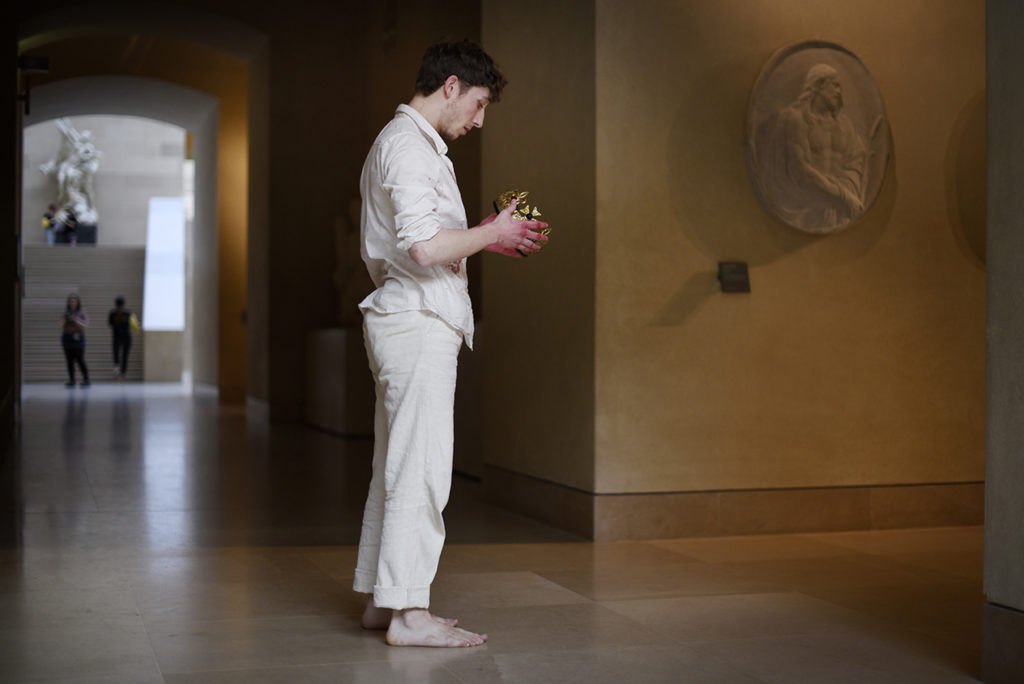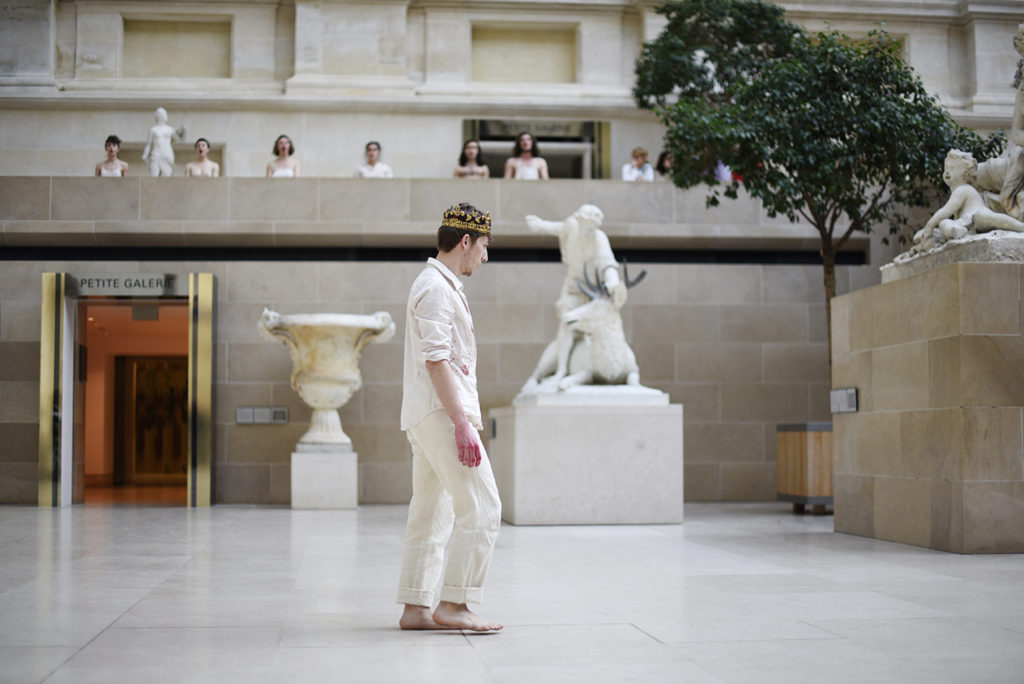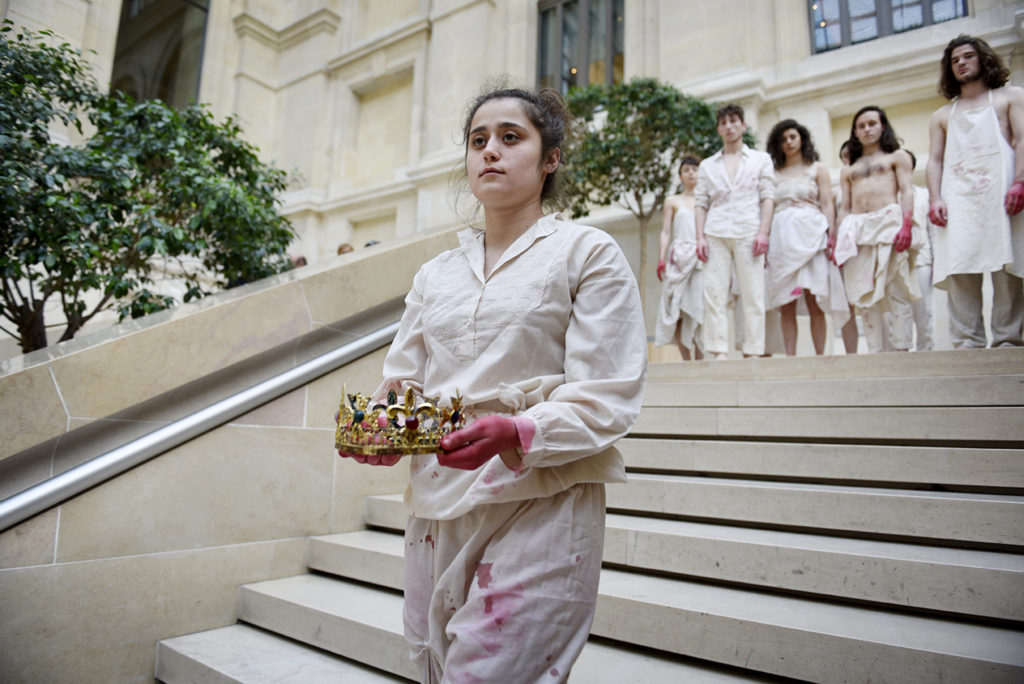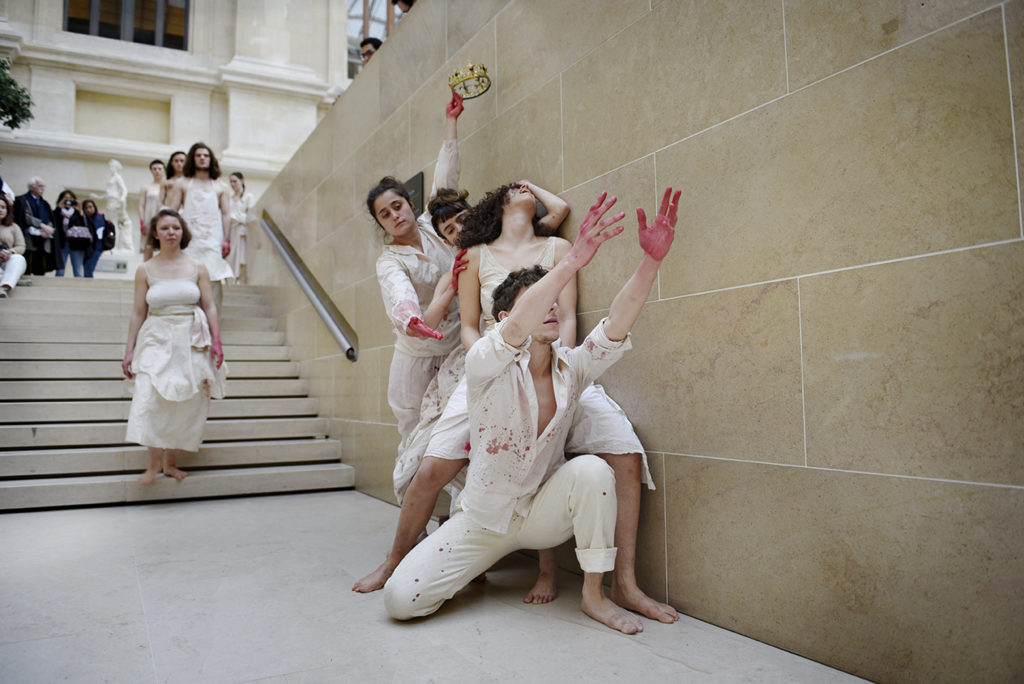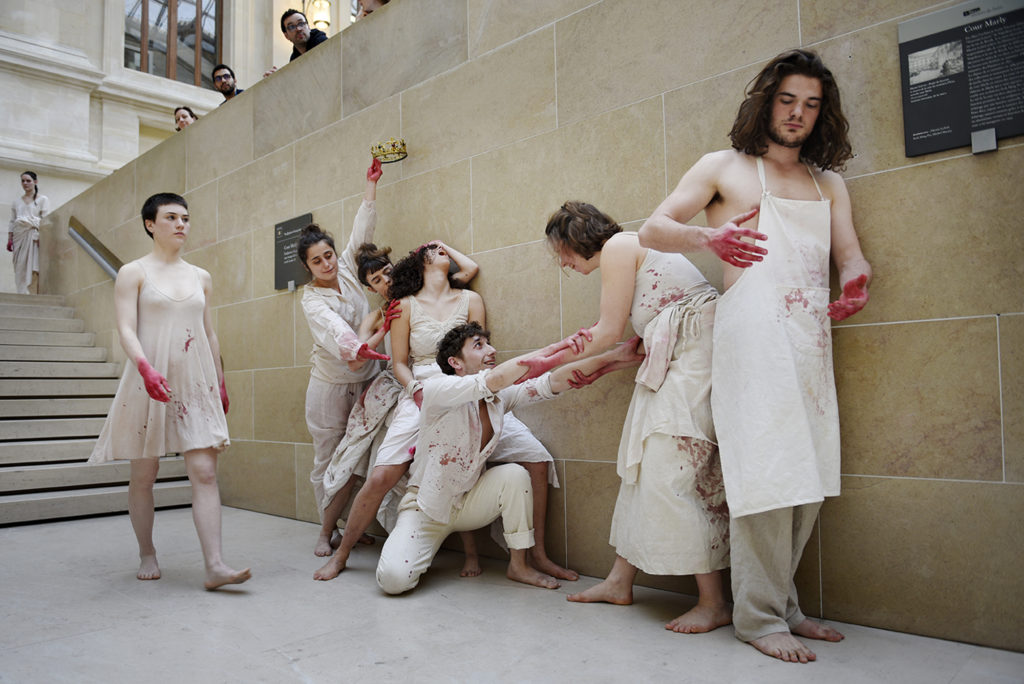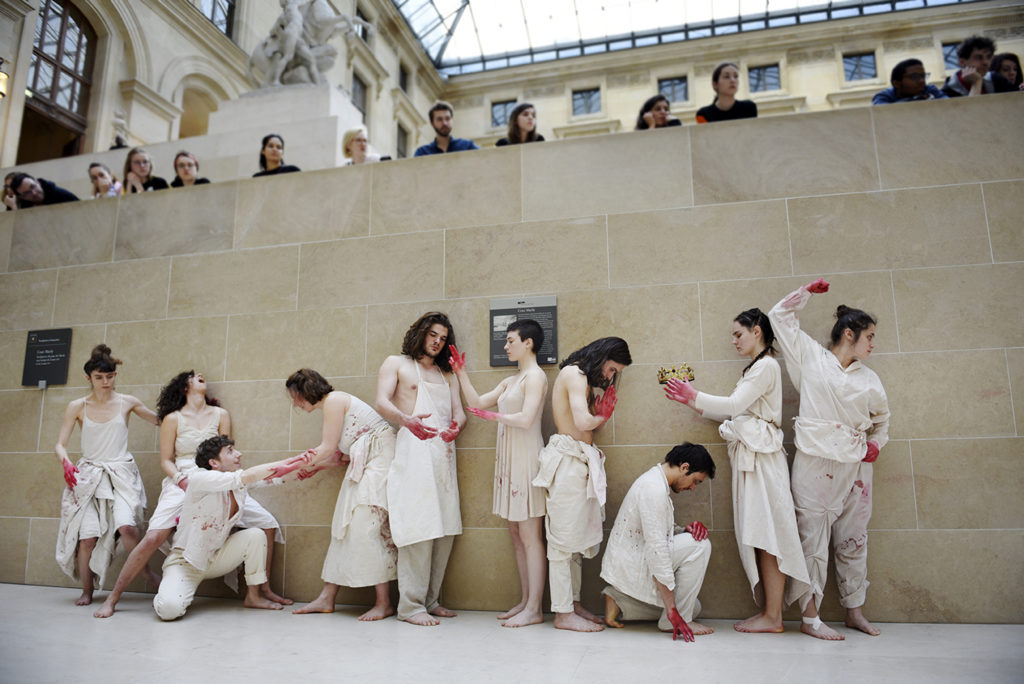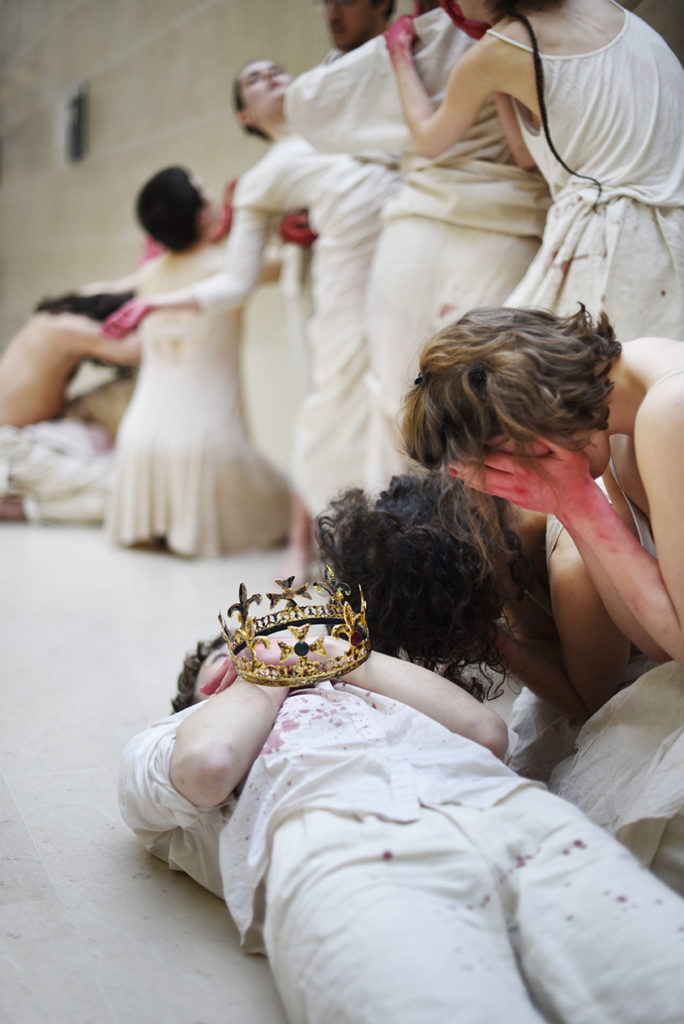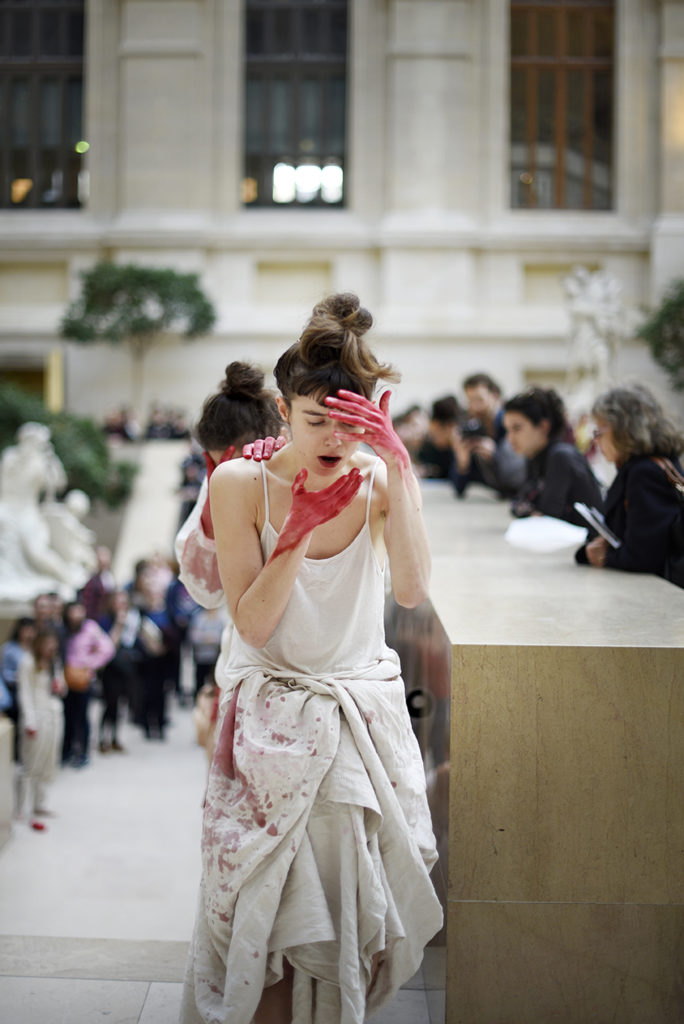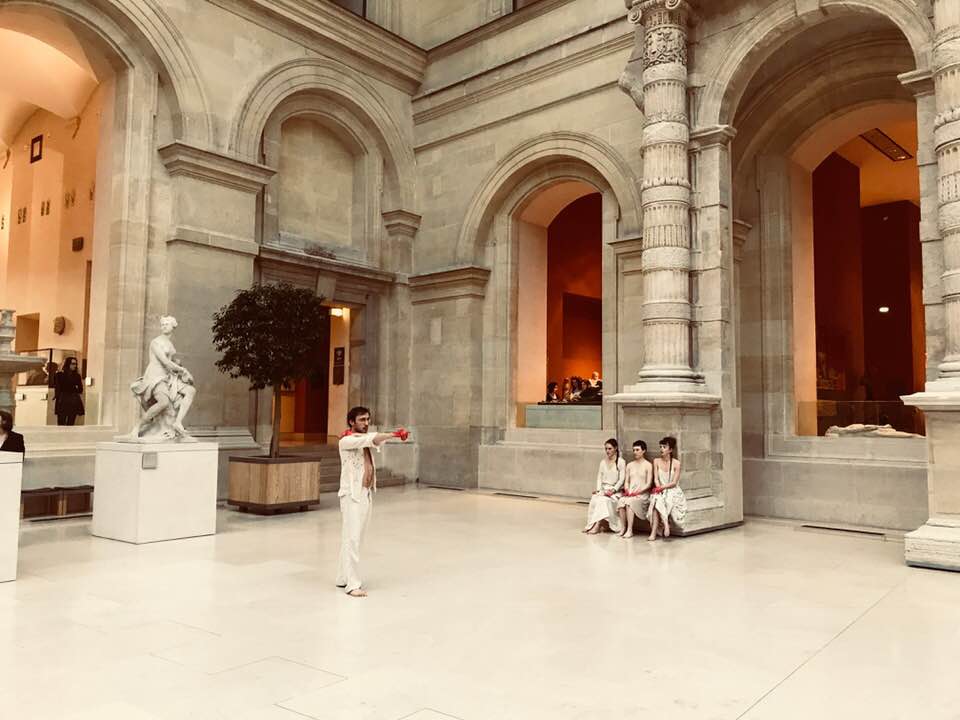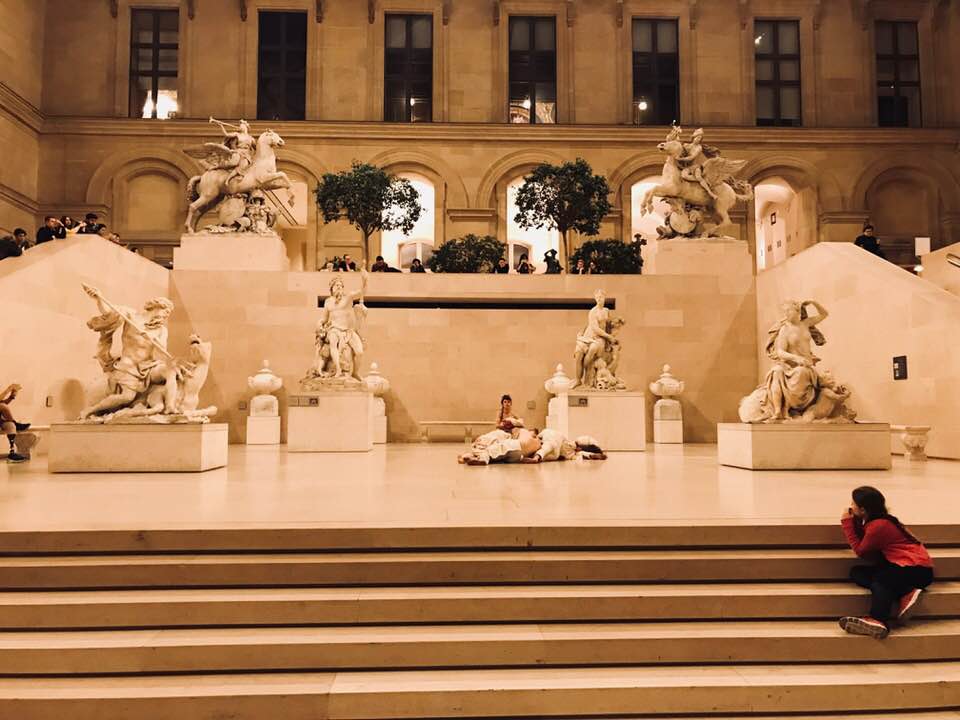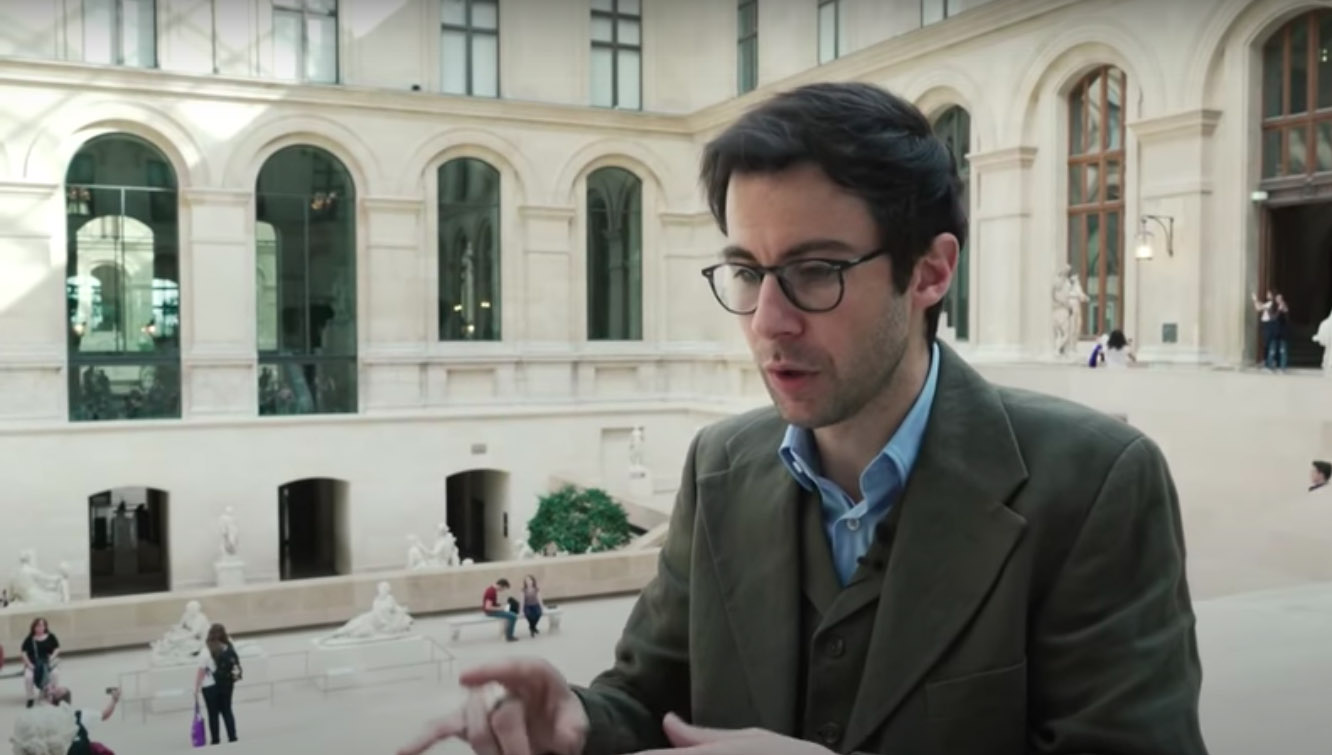École Supérieure d’Art Dramatique de Paris, PSPBB and the Louvre Museum, February-April 2018 •
École Supérieure d’Art Dramatique de Paris, PSPBB and the Louvre Museum, February-April 2018 •
École Supérieure d’Art Dramatique de Paris, PSPBB and the Louvre Museum, February-April 2018 •
A choir of bodies, voices and words wandering among marble gods and heroes.
The sculptures of the royal Parc de Marly (now in the Louvre) become the set, a set of stone in glory of the sovereign.
The tyrant’s voice is undermined by the voices of those whom marble has not (yet) frozen. Voices free to embrace the space and sing out the song of the oppressed under the (nearly) impassive gaze of the Louvre statues.
Twelve student actors, dancers and musicians lend their voices, bodies and talents to this theater of pageantry and pomp, where the outcome is never happy. At least not for everyone…
Choral performance mixing theater, music and dance, held on April 6, 11 and 13 at the Louvre Museum (Cour Marly), in concert with the Théâtre du Pouvoir exhibition, with the students of the 2018 ESAD graduate class and the early music department of the Pôle Supérieur Paris Boulogne-Billancourt.
"It is safer to be feared than to be loved."
- Nicolas Machiavelli
Credits
Texts by Charlotte Avias, Etienne de La Boétie, Georg Büchner, Fiodor Dostoievski, Euripide, Franz Kafka, Choderlos de Laclos, Nicolas Machiavel, Sénèque, William Shakespeare and from the Carmina Burana.
Music by Henry VIII d’Angleterre, J. Bennet, Claudio Monteverdi (or B. Ferrari ?), H. Purcell, G. F. Sances, Antonio Vivaldi, a 13th century Byzantine liturgical chant and traditional songs from the Kurpie region in Poland.
Concept, staging and musical direction: Marcus Borja
With
Charlotte Avias, Pauline Chabrol, Thomas Couppey, Anaïs Defay, Suzanne Dubois, Myriam Jarmache, Antoine Maitrias, Simon Peretti, Eléna Sandoz et Eliakim Sénégas-Lajus, and the musicians Helena Bregar (singer), and Yi-Chen Tseng (flute and traverso).
Special thanks to
Anne-Sophie Vergnes, Cyrille Gouyette, Serge Tranvouez, Carole Bergen, Bibiane Lapointe and Emilie Bouyssou

